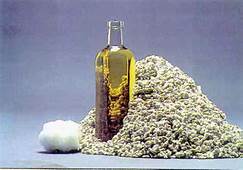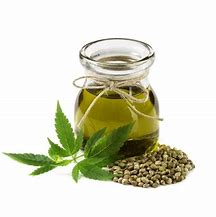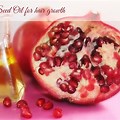Cottonseed oil




-
Cottonseed Oil
- Latin Name
Gossypium barbadense ( plus various species)
family; Malvaceae- Etymology
From the latin gossypinus, gossypium-like, cotton-like - The plant and its Environment
- Originally grown in India for the cotton fibre, the plant was introduced into China and Egypt about half a millennium BC and into the USA much later in 1774.
- There was a species grown in Peru predating the Egyptian cotton industry and the use of cottonseed oil is mentioned in ancient Hindu writings.
- The plant forms a shrub growing to a height of 1.5 meters, bearing yellow flowers with a purple center which lead to capsules containing the seeds and covered with trichomes, which are the source of cotton fiber.
- The OIl
- In Britain cottonseed oil used to be about 15% of the vegetable supply:; in 1956 it was less than 3%. Cottonseed oil is obtained from the seeds of Gossypium barbadense and other varieties: it is a bland, flavourless oil not liable too rancidity, being used for a great many purposes for external applications.
- Some seeds are almost bald and are known commercially as 'black' whereas others have a wooly lint on the outside and are known as 'white'; the former obviously produce more oil per seed weight (approximately 20-25%). Cottonseed oil has properties similar to Hibiscus sabdariffa (malvaceae) which is used as a substitute for crude castor oil (duke 1985)
- Method of Extraction
This oil is not expressed at high pressure (1500 pounds per square inch)resulting in a thick crude oil which must be refined.
Principal Constituents
| Type | Based On | Content -% |
| Typical saturated fatty content | 25 | |
| Monounsaturated fatty acid | ||
| C18:1 | oleic acid | 21 |
| Polyunsaturated fatty acid | ||
| C18:2 | linoleic acid | 50 |
| Typical unsaturated fatty acid content | 75 |
- Cosmetic Use
Cottonseed oil is inexpensive and therefore it is used widely in soaps, creams, baby creams, nail polish and lubricants. It is not suitable for aromatherapy.
Culinary Use
As it is cheap it is used in salad oil and for frying fish.
Cautionary Notes
Cottonseed oil is known to cause allergies, but it is difficult to avoid this much used oil because it is so widely used in cosmetic preparations. The oil is cathartic, abortifacient; no part of the plant should be used internally unless prior medical advice is obtained.
Reference: Duke J A 1985 Handbook of medical herbs. CRC, Boca Raton p.229: Carrier oils for Aromatherapy and Massage: Len Price with Ian Smith & Shirley Price.
Articles-Most Read
- Home
- Contact Us
- Coconut Oil-2
- Absorption Ratings for Carrier Oils
- Cold Pressing Method
- What are Essential Fatty Acids
- Cherry Kernel Oil
- Fixed Oils and Skin Penetration
- Hempseed Oil
- Almond Oil
- Cocoa butter
- Camelina Oil
- Coconut Oil
- Antibacterial Effects Of Carrier Oil
- Lime Blossom Oil (macerated)
- Carrot Oil, Wild Carrot Oil (macerated)
- Apricot Kernel Oil
- Kukui Nut Oil
- Jojoba Wax
- Pumkin Seed Oil - Cucurbita maxima, C. pepo
- Passion Flower OIl (Macerated)
- Hydrocotyle Oil (macerated)
- Palm Kernel Oil
- Rapeseed Oil - Carrier Oil
- Nutrients
Who's On Line
We have 109 guests and no members online
Articles-Latest
- How to Make Homemade Olive Oil: A Step-by-Step Guide
- 20 Evidence-Based Aloe Vera Oil Benefits For Skin, Hair & Health
- Peanut oil - Cold pressed - Are There Health Benefits? How To Make
- What Are the Health Benefits of Black Seed Oil?
- Comfrey oil Infused
- Chamomile Flowers Infused Oil
- Calendula Flowers Infused Oil
- Arnica Flowers Infused Oil
- How To Make Herb-Infused Oils
- DIY avocado oil for healthy skin
- How To Make Coconut Oil
- 8 Benefits of Mustard Oil, Plus How to Use It
- SHOREA STENOPTERA SEED BUTTER
- Shea Butter- 7 Amazing Benefits Of Shea Butter
- Monoi Oil For Hair & Skin
- Mango Seed Oil
- Cohune Oil Is The Next Big Thing
- Brazil Nut OIl
- 7 Impressive Benefits Of Allspice
- Camelina Oil Benefits, Uses, and Side Effects




